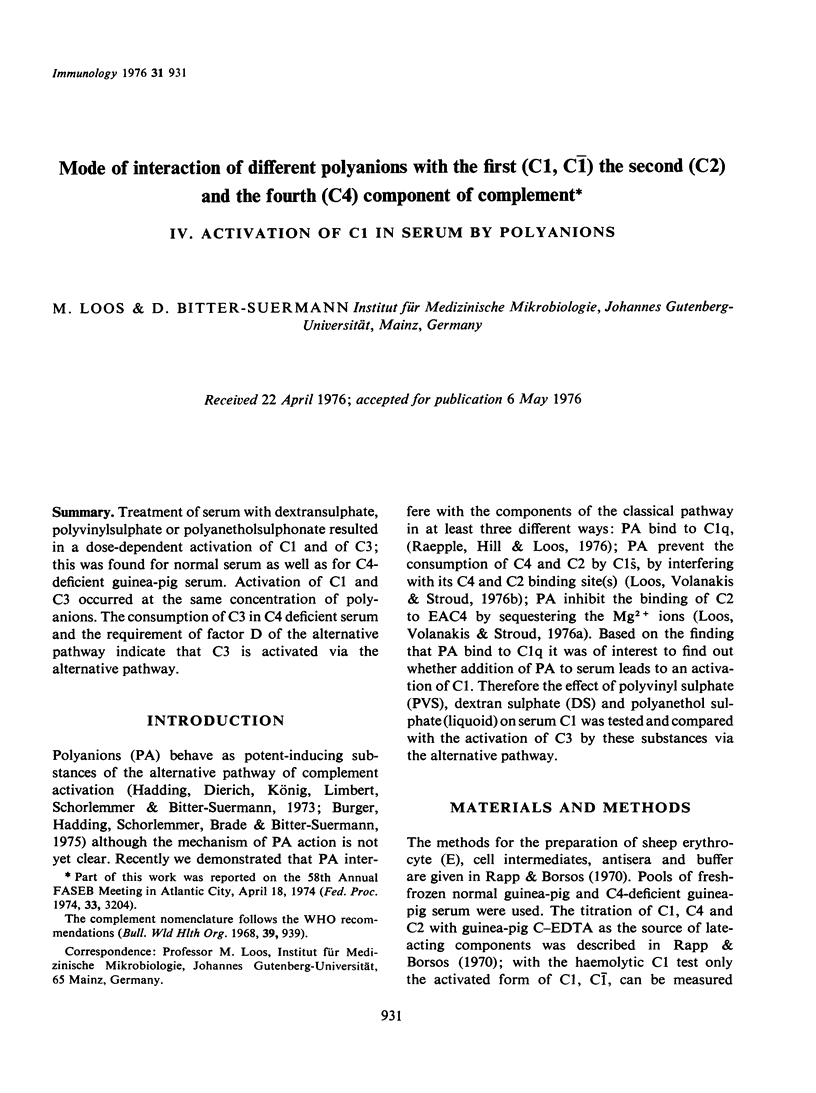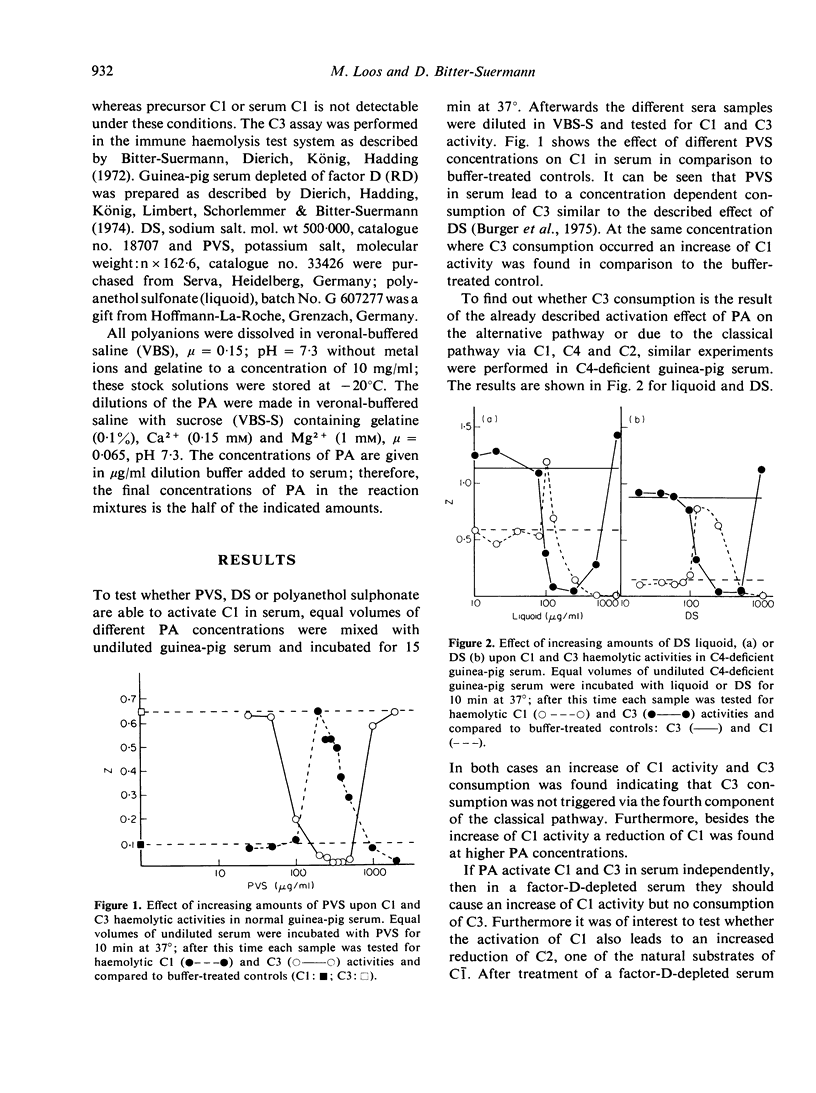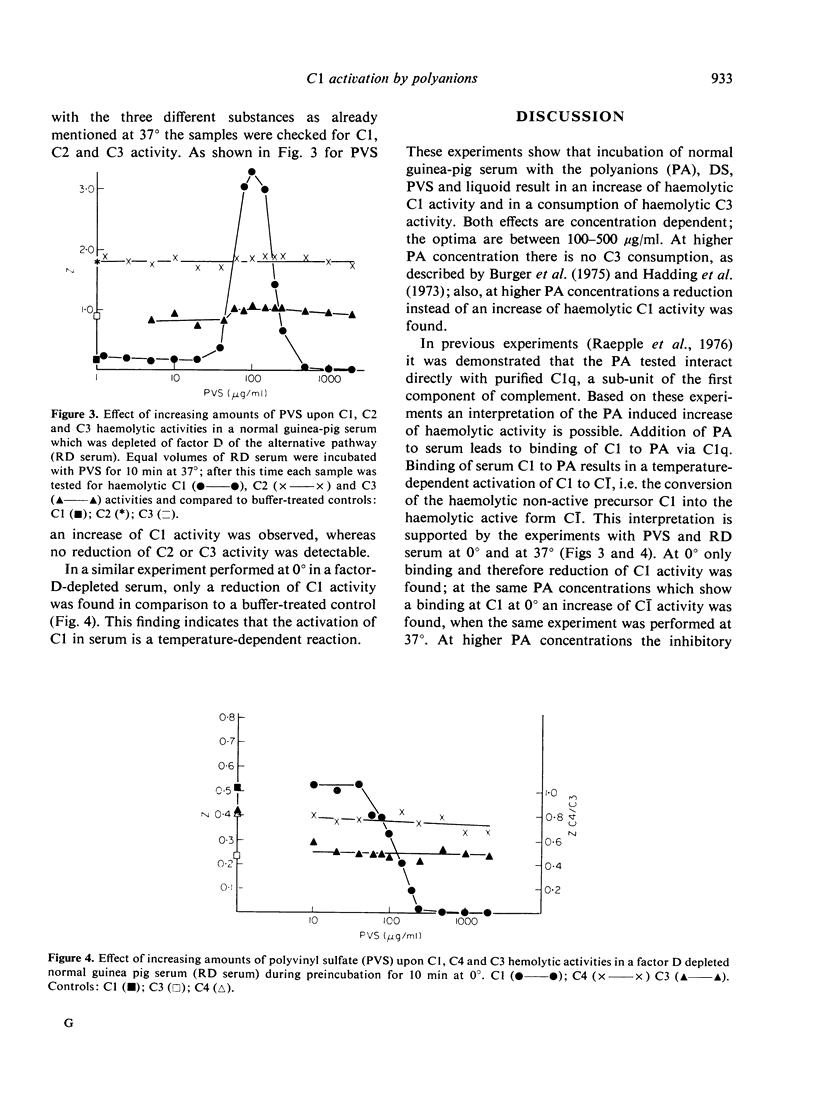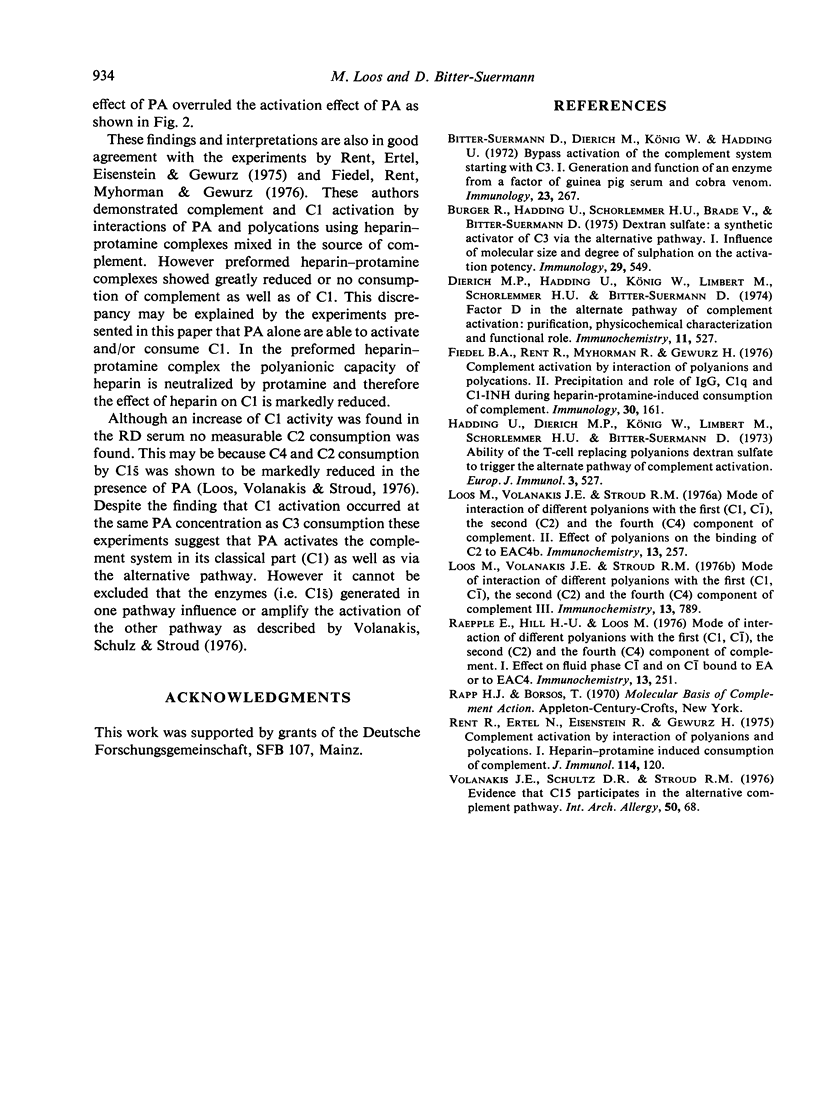Abstract
Treatment of serum with dextransulphate polyvinylsulphate or polyanetholsulphonate resulted in a dose-dependent activation of C1 and C3; this was found for normal serum as well as for C4-deficient guinea-pig serum. Activation of C1 and C3 occurred at the same concentration of polyanions. The consumption of C3 in C4 deficient serum and the requirement of factor D of the alternative pathway indicate that C3 is activated via the alternative pathway.
Full text
PDF



Selected References
These references are in PubMed. This may not be the complete list of references from this article.
- Bitter-Suermann D., Dierich M., König W., Hadding U. Bypass-activation of the complement system starting with C3. I. Generation and function of an enzyme from a factor of guinea-pig serum and cobra venom. Immunology. 1972 Sep;23(3):267–281. [PMC free article] [PubMed] [Google Scholar]
- Burger R., Hadding U., Schorlemmer H. U., Brade V., Bitter-Suermann D. Dextran sulphate: a synthetic activator of C3 via the alternative pathway. I. Influence of molecular size and degree of sulphation on the activation potency. Immunology. 1975 Sep;29(3):549–554. [PMC free article] [PubMed] [Google Scholar]
- Dierich M. P., Hadding U., König W., Limbert M., Schorlemmer H. U., Bitter-Suermann D. Factor D in the alternate pathway of complement activation: purification, physicochemical characterization and functional role. Immunochemistry. 1974 Sep;11(9):527–532. doi: 10.1016/0019-2791(74)90242-0. [DOI] [PubMed] [Google Scholar]
- Fiedel B. A., Rent R., Myhrman R., Gewurz H. Complement activation by interaction of polyanions and polycations. Immunology. 1976 Feb;30(2):161–169. [PMC free article] [PubMed] [Google Scholar]
- Hadding U., Dierich M., König W., Limbert M., Schorlemmer H. U., Bitter-Suermann D. Ability of the T cell-replacing polyanion dextran sulfate to trigger the alternate pathway of complement activation. Eur J Immunol. 1973 Aug;3(8):527–529. doi: 10.1002/eji.1830030817. [DOI] [PubMed] [Google Scholar]
- Loos M., Volanakis J. E., Stroud R. M. Mode of interaction of different polyanions with the first (C1, C1), the second (C2) and the fourth (C4) component of complement--II. Effect of polyanions on the binding of C2 to EAC4b. Immunochemistry. 1976 Mar;13(3):257–261. doi: 10.1016/0019-2791(76)90224-x. [DOI] [PubMed] [Google Scholar]
- Loos M., Volanakis J. E., Stroud R. M. Mode of interaction of different polyanions with the first (C1, C1), the second (C2) and the fourth (C4) component of complement--III. Inhibition of C4 and C2 binding site(s) on C1s by polyanions. Immunochemistry. 1976 Sep;13(9):789–791. doi: 10.1016/0019-2791(76)90202-0. [DOI] [PubMed] [Google Scholar]
- Raepple E., Hill H. U., Loos M. Mode of interaction of different polyanions with the first (C1, C1), the second (C2) and the fourth (C4) component of complement--I. Effect on fluid phase C1 and on C1 bound to EA or to EAC4. Immunochemistry. 1976 Mar;13(3):251–255. doi: 10.1016/0019-2791(76)90223-8. [DOI] [PubMed] [Google Scholar]
- Rent R., Ertel N., Eisenstein R., Gewurz H. Complement activation by interaction of polyanions and polycations. I. Heparin-protamine induced consumption of complement. J Immunol. 1975 Jan;114(1 Pt 1):120–124. [PubMed] [Google Scholar]


